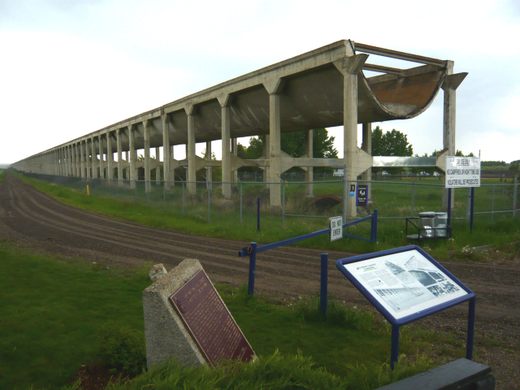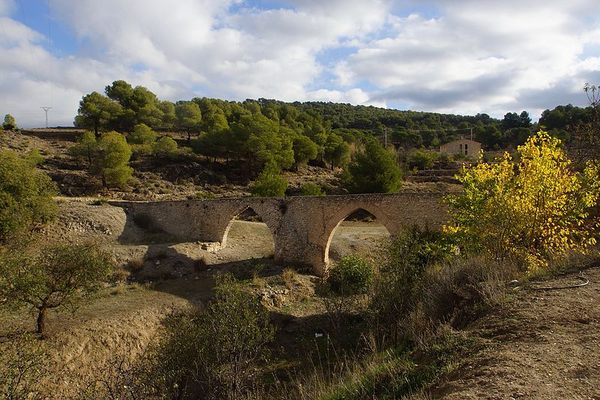Brooks Aqueduct
Built to supply water to farmers in Alberta, this was once was the world's longest elevated concrete structure.
The Brooks Aqueduct was built between 1912 and 1914 as part of an irrigation system to provide water to the arid farmlands of southeastern Alberta. At the time of its completion, it was the world’s longest elevated concrete structure when completed.
The main section of the aqueduct spans a 3.2-kilometer valley at an average elevation of 20 meters. Though the aqueduct is no longer functional, it has been preserved as a historic site.
The site has a plethora of information about the aqueduct and the history of the area. In 1894, the Canadian government passed the North-West Irrigation Act that set out how rivers could be used for irrigation. Potential users now had to apply for water rights that determined where they could divert water from a river and how much water they could use. The Brooks Aqueduct became a river in the sky that would allow farmers to get the water they needed for irrigation. This feat of engineering was officially up and running in 1915.
In addition to the aqueducts, these irrigation systems rely on canals, ditches, flumes, pumps, and gates to direct water from the Bow River into farmers’ fields. Many people were involved in this process including ditch riders who would ride up and down the canals ensuring the water was flowing properly.
Know Before You Go
The aqueduct is a short jaunt from the Trans Canada highway. It's about 4km down beautiful country roads - well worth the short detour! There are washrooms at the location but they are shut May-September.

















Follow us on Twitter to get the latest on the world's hidden wonders.
Like us on Facebook to get the latest on the world's hidden wonders.
Follow us on Twitter Like us on Facebook